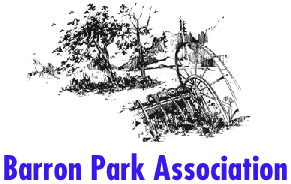

Emergency Preparedness-an
example, and a reminder
In 2004, the State of Florida got hit by four major hurricanes:
Charley, Frances, Ivan, and Jeanne. Perhaps the most devastating of
these hurricanes was Ivan, which made landfall just west of Pensacola
FL the night of 15-16 September. Sustained winds around the eye of
the hurricane were 130 miles per hour, with gusts to 165 miles per
hour. Ivan's worst damage was concentrated just east of the storm's
eye in Pensacola, where winds spinning counterclockwise around the
eye pounded the coast.
One of my college classmates is a resident of coastal Pensacola,
exactly in the zone of worst damage. 33 of the 43 houses in his
neighborhood suffered damage so severe that they were condemned, and
9 additional homes were flooded. My classmate's story (posted with
his permission at
www2.bpaonline.org/Emergencyprep/experience-ivan.html) is a powerful argument for emergency
preparedness. Please read it.
My classmate and his family (including his 88-year-old ill
mother-in-law) were unhurt, and his property suffered minimal damage.
This wasn't by chance. He was aware of the potential of hurricanes
(Hurricane Camile in 1969, for example, killed 269 people in
Mississippi and caused $3.8 billion in damage; Hurricane Andrew in
1992 killed 55 people in Florida and Louisiana and caused more than
$25 million damage). He had tracked Hurricane Ivan as it spread
devastation in the Lesser Antilles (particularly Grenada), and he
correctly foresaw that Pensacola was very likely to be squarely in
Ivan's path. Accordingly, my classmate took aggressive protective
measures, he evacuated his family before the last minute, he had
multiple means of communication, and he served as a leader in helping
his neighbors, both short-term and long-term.
My classmate's experience obviously is not specifically applicable to
us in Barron Park; we don't have hurricanes. But we do have major
rainstorms with associated flooding, and we certainly live in
"earthquake country." The U.S. Geological Survey estimates that there
is a 62% chance of at least one magnitude 6.7 or greater earthquake
striking the San Francisco Bay region before 2032 (see
http://quake.usgs.gov). Such an earthquake, regardless of its exact
epicenter, will cause major damage throughout the Bay Area. Sobering
is the fact that the 1995 magnitude 6.9 earthquake in Kobe Japan, a
bayside urban area not unlike the San Francisco Bay Area, killed
6,000 people and caused over $100 billion in damage.
In a major earthquake, we residents of Barron Park will experience
disrupted water supplies (remember that the Hetch Hetchy water
pipeline crosses right over the Hayward Fault), absence of
electricity and gas, moderate to severe structural damage to our
residences, and a number of injuries. Governmental resources will
simply be overwhelmed, and the efforts of public agencies such as the
Palo Alto Fire Department will be directed towards facilities of
highest priority (e.g., hospitals). Community organizations such as
the Palo Alto Neighborhood Disaster Activity (PANDA; )
will supplement City resources, but these volunteer personnel also
will be severely taxed in the first phases of a major disaster.
Consequently, each household in Barron Park will be on its own and
must be prepared to provide for its basic needs for several days to a
week after a major disaster. We all need to have sufficient emergency
supplies to tide us over until outside assistance becomes available
and water, electricity, and gas are restored.
Our emergency supplies should include water, food, a battery-powered
radio, and first-aid supplies. Excellent guidelines for building
emergency caches are presented in the 3rd edition of "Living with our
Faults", published in 1994 by the City of Palo Alto (). A wide selection of Disaster Preparedness
Kits is sold by the Palo Alto Chapter of the American Red Cross ().
Finally, more expansive analysis of the need for household emergency
preparedness can be found in the spring, summer, and fall editions of
the BPA Newsletter, archived at
www2.bpaonline.org/BP-News/index.html.
Referring back to my classmate's experience with Hurricane Ivan in
Pensacola, certainly government and relief agencies do swing into
action in response to a disaster. But their best efforts are no
substitute for personal and household preparedness. In the first few
days to a week after a disaster, each household will be on its own
and must be prepared to take care of itself.
By
Patrick Muffler,
Committee Chair.